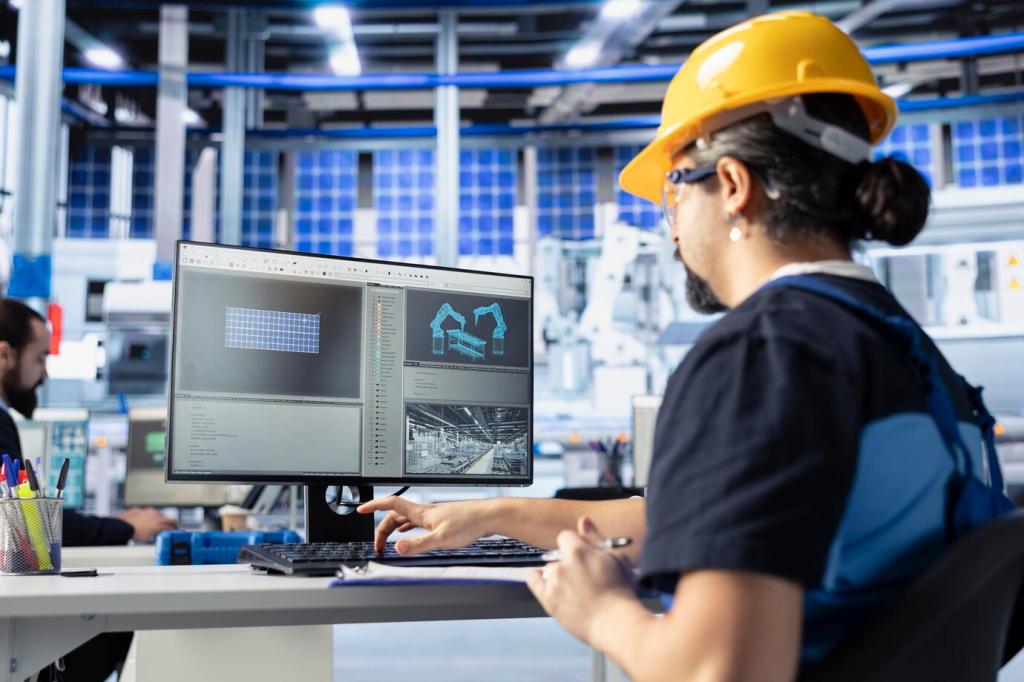
AI for Sustainable Transportation: Smarter Moves, Cleaner Cities
Chosen theme: Leveraging Artificial Intelligence for Sustainable Transportation Systems. Welcome to a future where every trip pollutes less, moves faster, and feels safer. Here we explore practical, human-centered ways AI helps cities cut emissions, boost access, and make mobility fair for everyone.
Why AI Matters for Sustainable Mobility
AI as a Catalyst for Change
From learning traffic patterns to predicting demand, AI accelerates sustainability by turning complex city dynamics into precise actions. Think of it as a strategic co-pilot that helps planners, operators, and communities make better choices every hour of every day.
From Metrics to Meaningful Outcomes
Numbers only matter when they change lives. AI helps convert metrics like travel time and emissions into outcomes people feel, like cleaner school routes, more reliable buses, and safer crossings for seniors and families using strollers or mobility aids every morning.
Join the Conversation
What is the most frustrating part of your daily commute, and where do you see room for AI to help? Add your thoughts below, share examples from your neighborhood, and subscribe for practical case studies delivered straight to your inbox each week.



Traffic Flow and Signals that Learn
Reinforcement Learning at Intersections
Reinforcement learning agents adjust green times based on arrivals, queues, and variability, often cutting delays and emissions by double digits. A pilot corridor learned lunch rush patterns within weeks, smoothing platoons and trimming fuel waste without expensive construction or extended closures disrupting businesses.
Multimodal Priority with Equity Lenses
AI can allocate time not only for vehicles but for buses, bicycles, and pedestrians, prioritizing routes serving hospitals, schools, and essential workers. Weighted fairness ensures communities historically overlooked are not asked to carry congestion or risk while others enjoy faster commutes daily.
Share Your Street-Level Insights
Which crosswalks feel unsafe, and when do bus bunches crush reliability most? Your observations help train the models we discuss. Share times, locations, and photos if possible, and subscribe to see how your insights turn into improvements others can replicate across communities.

Freight and Fleets: Efficiency Meets Decarbonization
Smarter Routing and Consolidation
AI merges orders, predicts dwell times, and routes to avoid congestion, curb conflicts, and empty backhauls. A family run logistics company in Rotterdam cut miles by coordinating pickup windows with customers, saving fuel and time while maintaining beloved service reliability during seasonal peaks.
Electrification, Charging, and Battery Health
Optimizers schedule charging when grids are greenest and cheapest, protect battery longevity, and adjust routes for temperature, payload, and terrain. This turns range anxiety into a managed variable, enabling reliable service and genuine emissions reductions validated against life cycle accounting frameworks shared publicly.
Coaching Safer, Greener Driving
Telematics and gentle feedback curb harsh accelerations, speeding, and idling, improving safety and fuel economy together. One pilot paired coaching with monthly peer recognition, reducing incident rates and saving fuel without punitive tactics, building a safety culture drivers proudly owned and sustained over time.




Mitigating Bias in Mobility Models
Historical data can encode redlining, enforcement disparities, and infrastructure neglect. Equity audits, representative sampling, and outcome based validations help. Metrics must track who benefits and who waits longer, ensuring AI reallocates advantages toward communities that have been underserved for decades consistently.

Transparency and Accountable AI
Publish model assumptions, performance by neighborhood, and guardrails for human oversight. Open dashboards and plain language explanations invite scrutiny. People accept change when they see the why and how, and when feedback loops are easy, fast, and respected through formal governance structures regularly.

Co-Creation with Neighborhoods
Participatory mapping and street audits gather hyperlocal knowledge no sensor captures. Pair stipends with training so residents help design routes, crossings, and curb rules. This builds legitimacy and yields designs that serve school drop offs, shift workers, and seniors without unintended burdens daily.
Your Roadmap: From Pilot to Citywide Impact
Pick one corridor, one depot, or one rider segment. Define a clear hypothesis, a short timeline, and quick iteration cycles. In Los Angeles, a targeted signal pilot reduced bus delays enough to justify broader rollout within months, with strong community support proudly maintained.
